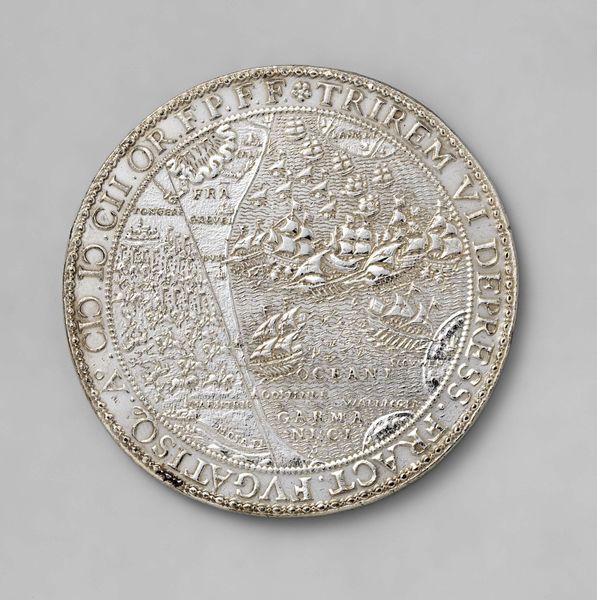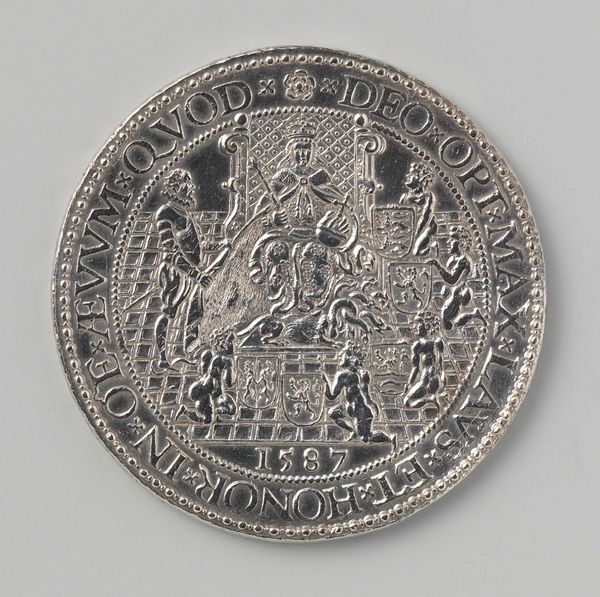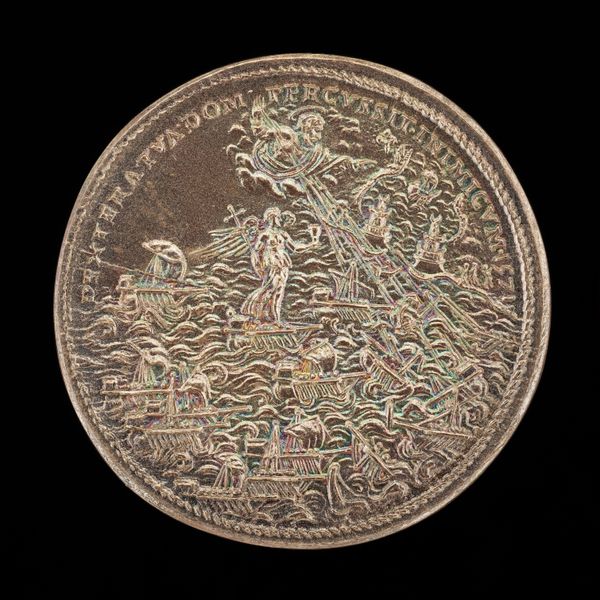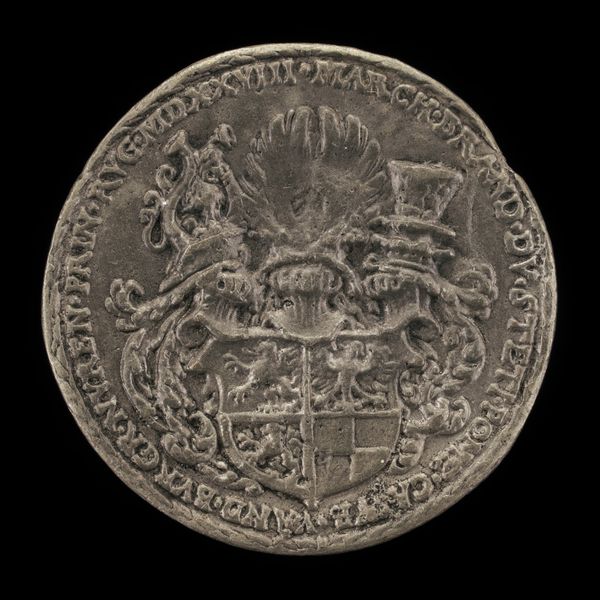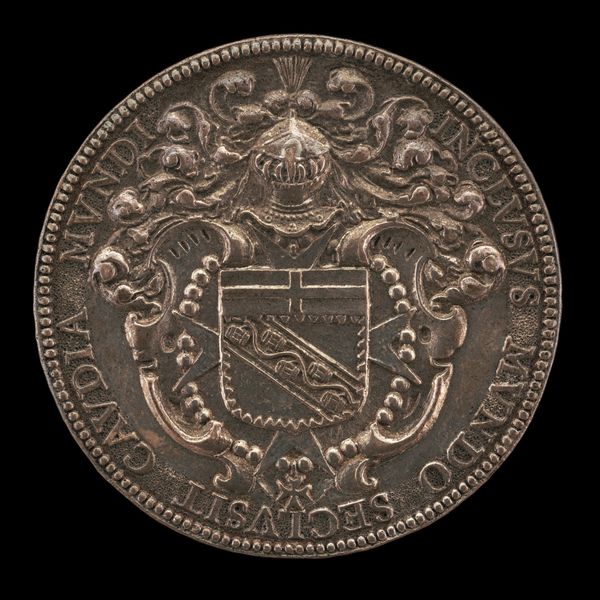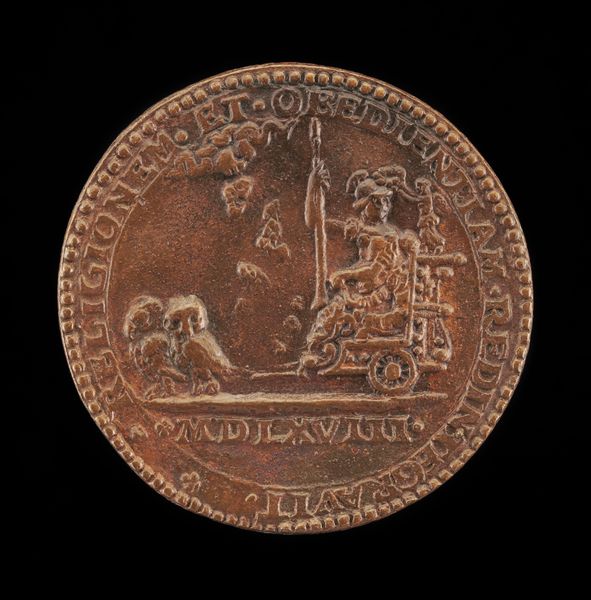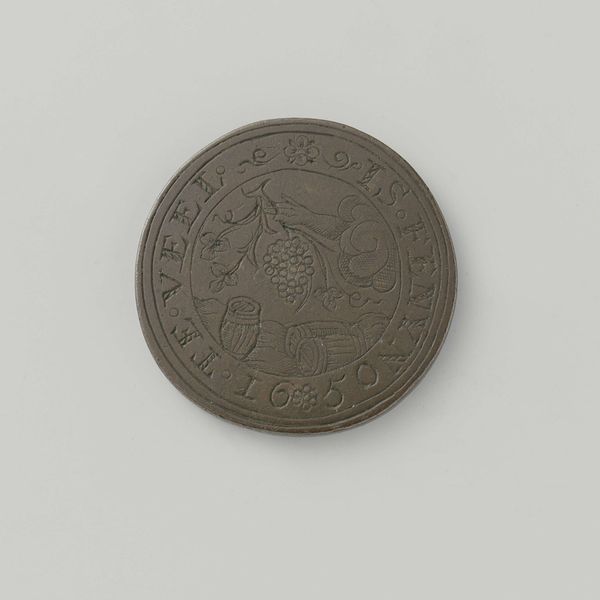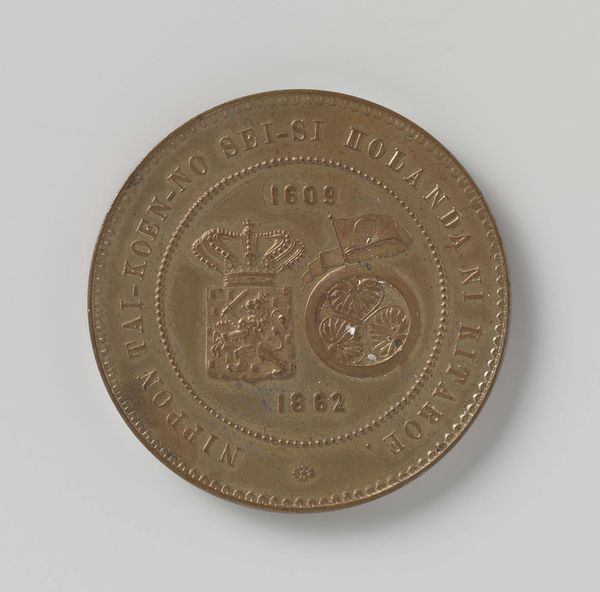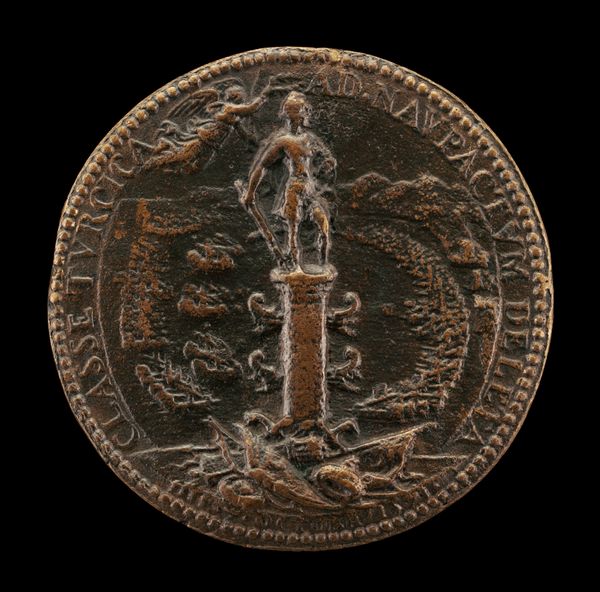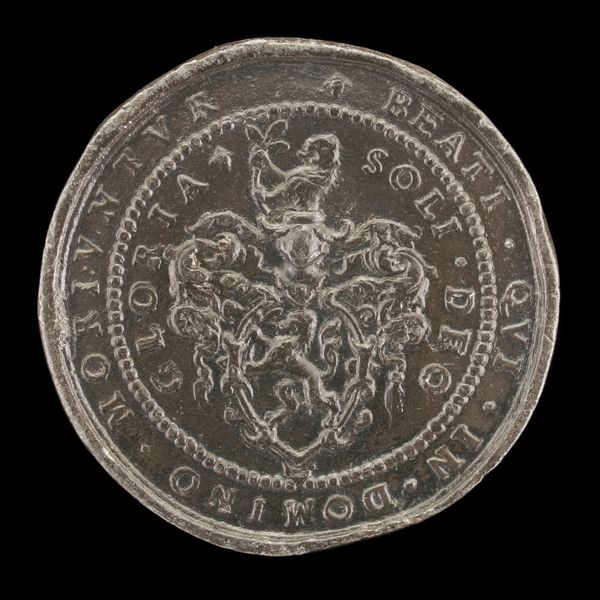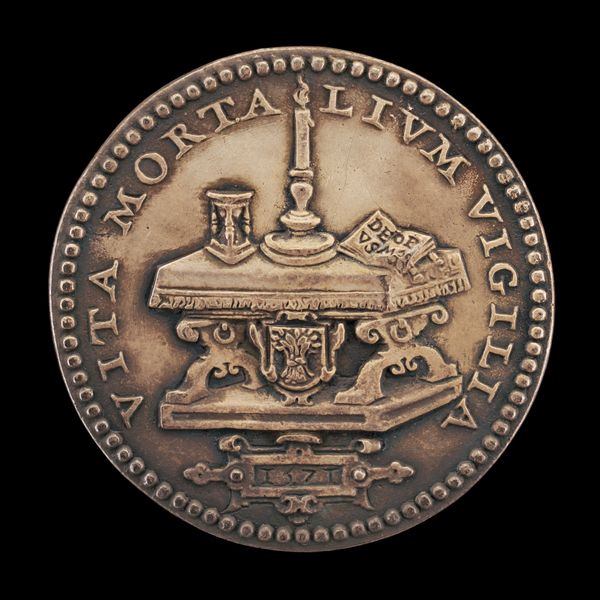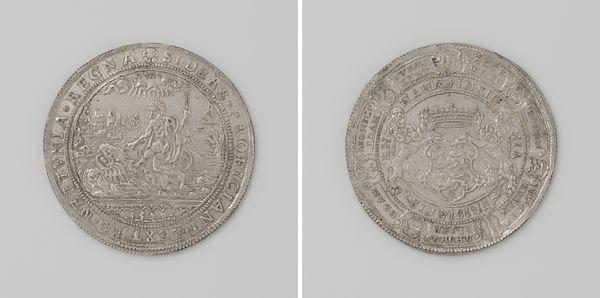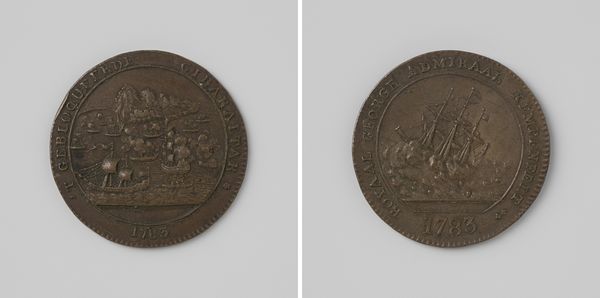
metal, relief, sculpture
#
medal
#
metal
#
sculpture
#
relief
#
11_renaissance
#
sculpture
#
history-painting
Dimensions: Diameter: 50 mm
Copyright: Public Domain
Editor: This is "Siege of Turnhout," a metal relief created between 1592 and 1602 by G.V. Bijlaer. It's currently housed in the Metropolitan Museum of Art. It has a very dense composition! What can you tell me about the historical significance of this piece? Curator: It's fascinating to consider this medal as a piece of public art, really, meant for circulation and display, not unlike a propaganda poster today. This commemorates the Spanish defeat at Turnhout. What do you notice about the Latin inscription? Editor: I see “Victoria Turnotana, Janv. 1597,” celebrating the victory. Then there’s "In oculis nostris…factum est" going around the rim, "before our very eyes…” kind of highlighting the eyewitness nature. What's the full inscription? Curator: Yes! The full inscription around the circumference states, "In oculis nostris admirabile A.Dno factum est", which translates to "In our eyes, it is miraculous, [something] made by the Lord". Think about that in relation to the political and religious climate of the time; the idea that victory is divinely ordained! What does that imply about the depiction of battle itself? Editor: Well, it downplays the human cost, focusing instead on the providential aspect. It makes you wonder about the intended audience and how they perceived such a claim. Was this widely circulated? Curator: Certainly among those aligned with the victorious side. Remember, the politics of imagery is potent, especially in times of conflict. Circulating pieces like this was vital to maintaining political and social order, shaping public opinion through seemingly objective visual "reporting". The question of accessibility, though, depends on who the patron wanted to reach. Editor: So, more than just art, it’s a political tool, shaping narratives about a specific historical moment and meant to reinforce power dynamics? It really gives a new lens on this. Curator: Exactly. It reveals how art, even on a small scale like this medal, actively participates in constructing and disseminating history. Thanks for helping me notice the little details, this was revealing.
Comments
No comments
Be the first to comment and join the conversation on the ultimate creative platform.
